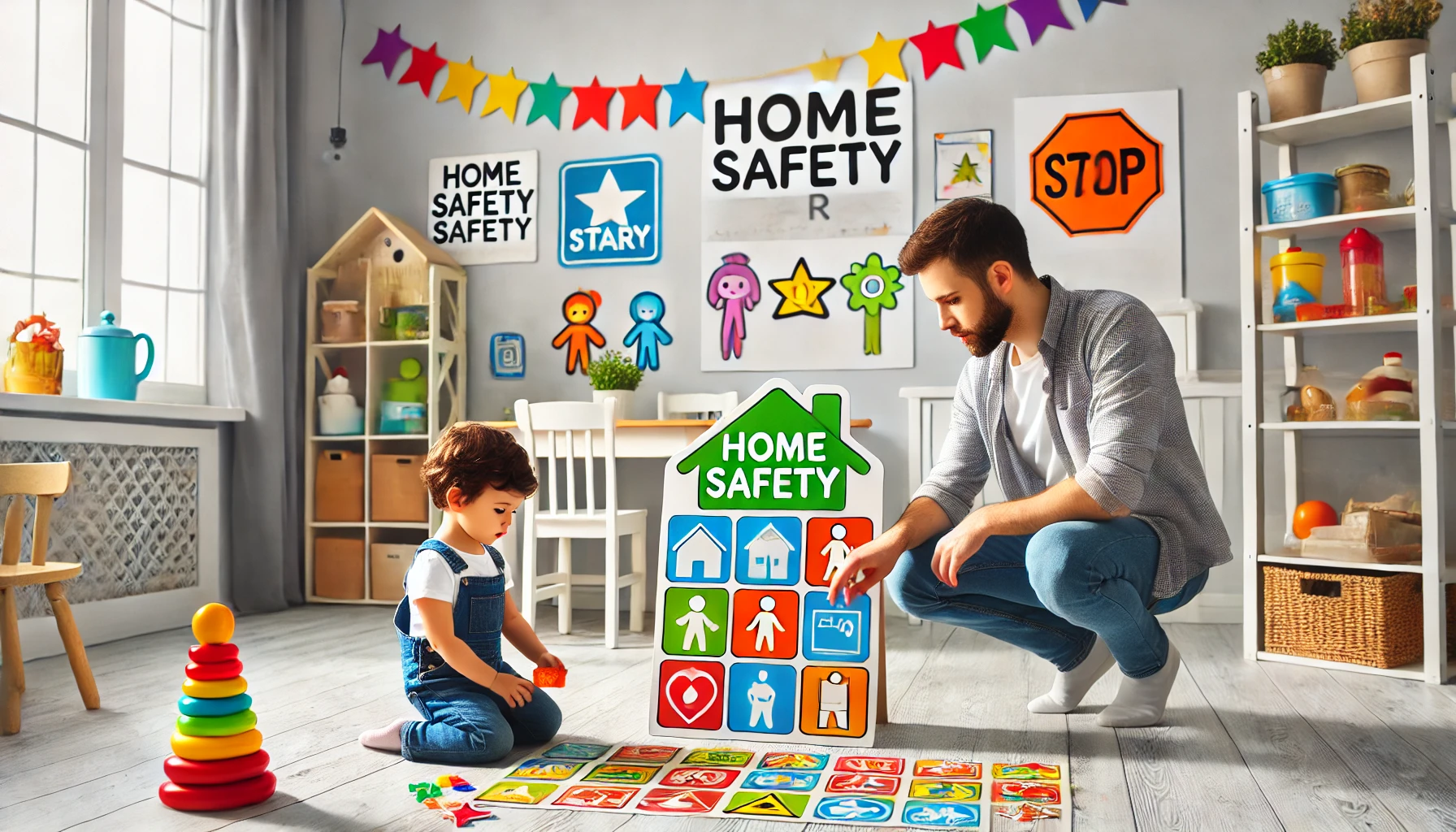Helping young children understand safety at home is essential for their well-being. While they are naturally curious and eager to explore, teaching them about safe behaviors in a simple and positive way builds awareness and confidence. With clear rules, hands-on activities, and gentle reminders, children can learn to navigate their home environment safely.
Why Teaching Home Safety Matters
- Prevents accidents and injuries
- Builds early independence with awareness
- Creates a sense of responsibility
- Encourages cautious curiosity
- Prepares children for emergency situations
1. Explain Home Safety in Simple Terms
Keep your language clear and friendly.
Activity Idea:
Say: “Safety means keeping your body safe from harm.”
Use examples: “We stay away from hot stoves to protect our hands.”
Ask: “Can you think of something in our home we need to be careful with?”
What Kids Learn:
- Basic safety vocabulary
- Awareness of hazards
- Engagement in their own safety
2. Use Visual Safety Signs
Visuals help children remember rules.
Activity Idea:
Create colorful signs for important safety zones, like “Hot – Stay Back!” near the stove.
Use pictures for non-readers: flames for heat, water droplets for slippery floors.
Make it interactive: let kids help decorate the signs!
What Kids Learn:
- Visual cues for caution
- Recognition of household risks
- Participation in safety reminders
3. Practice “Safe vs. Unsafe” Sorting Games
Make learning fun.
Activity Idea:
Print or draw images of safe and unsafe behaviors (like crossing at the crosswalk vs. running into the street).
Let children sort the images into safe and unsafe piles.
Discuss each choice: “Why is this picture safe?”
What Kids Learn:
- Critical thinking about choices
- Recognizing safety hazards
- Conversation about good decisions
4. Teach About Emergency Contacts
Prepare children for emergencies.
Activity Idea:
Teach your child their full name, address, and a parent’s phone number.
Role-play calling emergency services: “What would you say if you need help?”
Create a visual emergency contact card.
What Kids Learn:
- Important personal information
- Confidence in asking for help
- Emergency preparedness
5. Role-Play Safety Scenarios
Practice makes perfect.
Activity Idea:
Act out scenarios: “What do you do if you see something sharp on the floor?”
Praise safe choices during role-play.
Use toys or stuffed animals to demonstrate safe behavior.
What Kids Learn:
- Real-life application of safety knowledge
- Comfort in making safe choices
- Problem-solving skills
6. Read Books About Home Safety
Stories stick in children’s minds.
Activity Idea:
Read books like Officer Buckle and Gloria by Peggy Rathmann or Be Careful and Stay Safe by Cheri J. Meiners.
Ask: “What did the characters do to stay safe?”
Draw pictures of safe behaviors after the story.
What Kids Learn:
- Story-based learning
- Emotional connection to safety habits
- Retention of important lessons
7. Praise Safe Choices Daily
Positive reinforcement builds habits.
Activity Idea:
Notice and praise: “You kept the floor clear of toys—great job keeping our home safe!”
Use a safety star chart to track safe actions.
Reflect: “What safe choices did you make today?”
What Kids Learn:
- Motivation through recognition
- Daily safety awareness
- Pride in responsibility
8. Teach Boundaries Around Dangerous Areas
Set clear household rules.
Activity Idea:
Identify off-limits areas together: “The kitchen is off-limits when we are cooking.”
Use visual markers like gates or signs.
Explain why boundaries matter.
What Kids Learn:
- Respect for household safety zones
- Understanding of boundaries
- Trust in rules for protection
Final Thoughts
Teaching young children about home safety gives them the tools they need to explore confidently while staying protected. Through simple conversations, playful learning, and daily reinforcement, kids can build an early foundation of safe habits. These lessons empower them to make smart choices and grow into responsible, safety-aware individuals.
